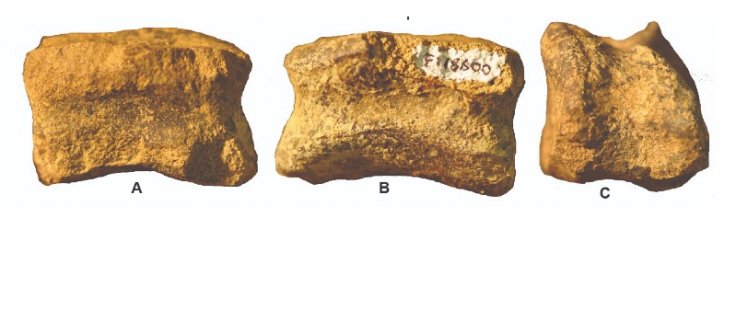
A team of scientists at the University of Oregon has discovered a dinosaur bone in eastern Oregon near Mitchell. It should be noted that this is the first confirmed case of dinosaur bone discovery in Oregon, and initial analysis revealed that this bone is approximately 103 million years old.
Researchers who took part in this study revealed that this discovery was totally unexpected as the entire region was underwater mostly during the dinosaur age. The discovered toe bone apparently belongs to a plant-eating, bipedal dinosaur known as an ornithopod.
"This bone was sitting out there with all the rocks. It was pretty surprising. No excavation was needed. It was just sitting among the Ammonites and coil fossils. It was in a marine rock. That is not where you would expect to find dinosaurs. We have seen from these same rocks pterosaur bones and a plesiosaur. That's been known for some time. But dinosaurs have been missing until now," said Greg Retallack, a scientist at the University of Oregon told the registerguard.com.
Interestingly, the time period in which these ornithopods lived falls in the same geological period that also gave rise to the daring Tyrannosaurus Rex that ruled the planet for many years.
As per researchers, the bipedal dinosaur more than 20 feet long and weighed nearly a ton. This creature might have died onshore and washed out to sea, and this will be the reason why it was discovered in Oregon, a watery world during ancient times.
A few weeks back, a team of Spanish and Argentinian researchers had discovered the remnants of a previously unknown species of dinosaurs in Argentina. Experts revealed that this dinosaur named Lavocatisaurus agrioensis might have lived 110 million years ago, and they had long necks, a small head and long tails. Researchers also added that the harsh weather conditions in this Argentinian desert characterized by insufficient flora and fauna have contributed to their death.








